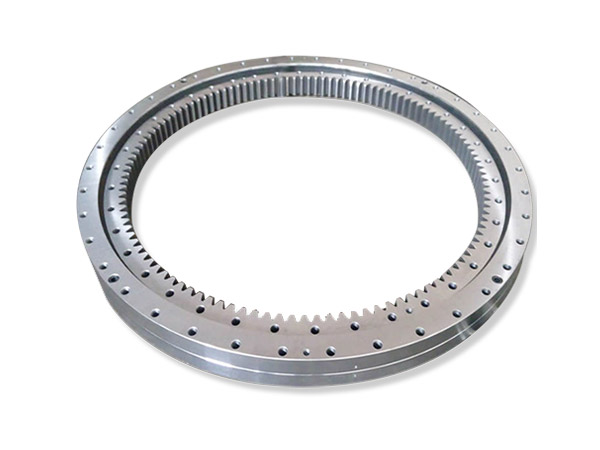Why should the slewing bearing be pickled? Pickling process
In our production process, the process of cleaning and degreasing the metal parts and soaking them in an acid solution is usually called pickling. Bearings also need to be pickled, so why should slewing bearings be pickled?
There are two main purposes, one is to remove oxide scale or burrs on the metal surface by pickling, and the other is to pickling to check metal surface defects to see if there is burn corrosion. The editor of Lunda will introduce to you the specific operation process of slewing bearing pickling.
The purpose of pickling of slewing bearings

1. Surface purification: Use pickling or chemical cleaning to clean the bearing surface, such as pickling before electroplating, pickling before phosphating, pickling to remove oxide skin burrs, etc. Use pickling liquid to choose cold pickling or hot pickling according to the condition of the metal surface. It is widely used to remove oxide scale on the surface of the cage.
2. Pickling inspection: Use pickling to check the bearing surface defects, which is called pickling inspection or burn corrosion. It is a kind of detection method, commonly used in cold pickling with nitric acid. If the metal surface has cracks, decarburization, peeling, burns and other defects, it can be manifested by cold pickling. In foreign countries, this pickling inspection technology is often classified into the NDT (no inspection) method. Most domestic factories use this inspection method to detect the presence of surface defects.
According to different application purposes, processing requirements and different raw materials, select the correct pickling technology and use the appropriate pickling process (including the selection of acid solution, corrosion inhibitor, process steps, pickling time, etc.), and a special The pickling staff conduct operations and inspections to ensure the pickling effect and the quality of the bearing products. Let’s take a look at the operation process of pickling with Ronda editor.
The process flow of slewing bearing pickling

1. Preparation before pickling: the bearing parts need to be cleaned before pickling, and the surface should not be dirty with oil, magnetic powder, dust, etc.; if the surface is severely rusted, it needs to be derusted and then pickled.
2. The pickling process:
(1) Put the bearing into a metal cleaner solution for soaking. The concentration of the solution is required to be 4%~5%, and the temperature should be controlled at 75~90℃. If it is pickling, use normal temperature water to dilute the solution. The soaking time is not less than 1 minute.
(2) During the process, the bearing should be shaken or moved to make it fully contact with the solution, and the solution should be kept clean, and the pickling time should be controlled within 5 minutes.
(3) Rinse the soaked bearing in flowing cold water and cool it to room temperature.
3. Inspection after pickling: Check the appearance of the bearing. Its surface should be consistent silver gray or light gray. Generally, the burned position will appear black or bright white, the soft spot position will be dark gray or black, and the decarburized position will be off-white. During the inspection process, the bearing surface is not allowed to be wiped. If in doubt, use absorbent cotton dipped in ethanol or anti-rust solution to wipe.

After the inspection is completed, the bearing should be sent to the anti-rust process in time for treatment to avoid re-oxidation and corrosion of the surface.
3. Precautions for pickling of slewing bearings
1. During the pickling process, the operation should be carried out strictly in accordance with the process sequence, and the process sequence should not be randomly selected.
2. Keep Lingshui flowing and clean during the pickling process and avoid turbidity.
3. The whole process should be carried out under the conditions of good ventilation and safety protection.
4. When replacing the pickling solution, the cleaning tank needs to be cleaned, rinsed with clean water 2-4 times and then the solution is prepared.
5. When preparing the diluted solution, pour the concentrated acid into water or alcohol and keep stirring. If there is solid, stir the solid first and then add the concentrated acid. It is forbidden to pour water into the concentrated acid, which is prone to splashing or danger. accident.
The above is a specific introduction on why the slewing bearing should be pickled and the pickling process. I hope to help everyone better understand the purpose and meaning of pickling. At the same time pickling can help the bearing achieve better performance

